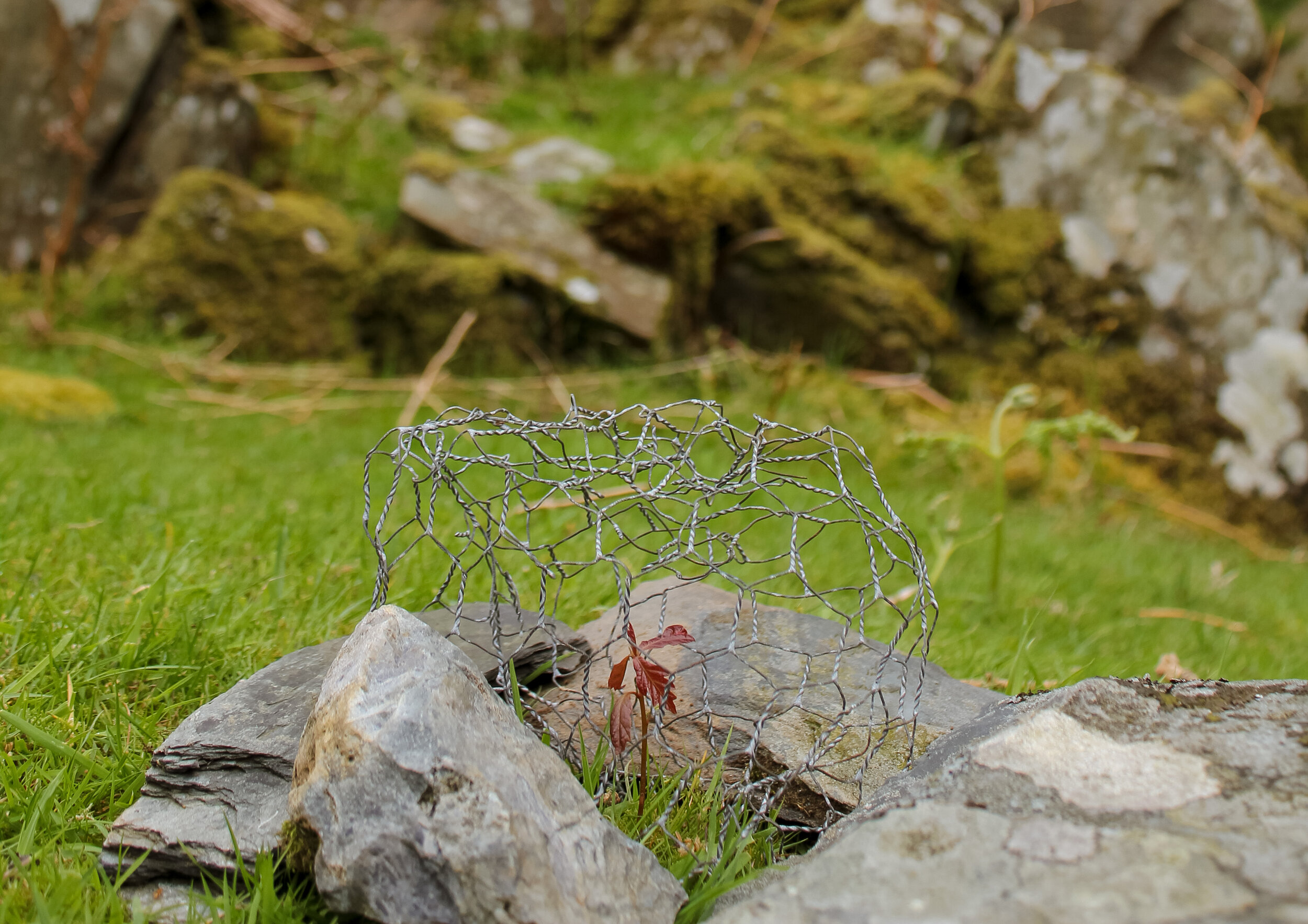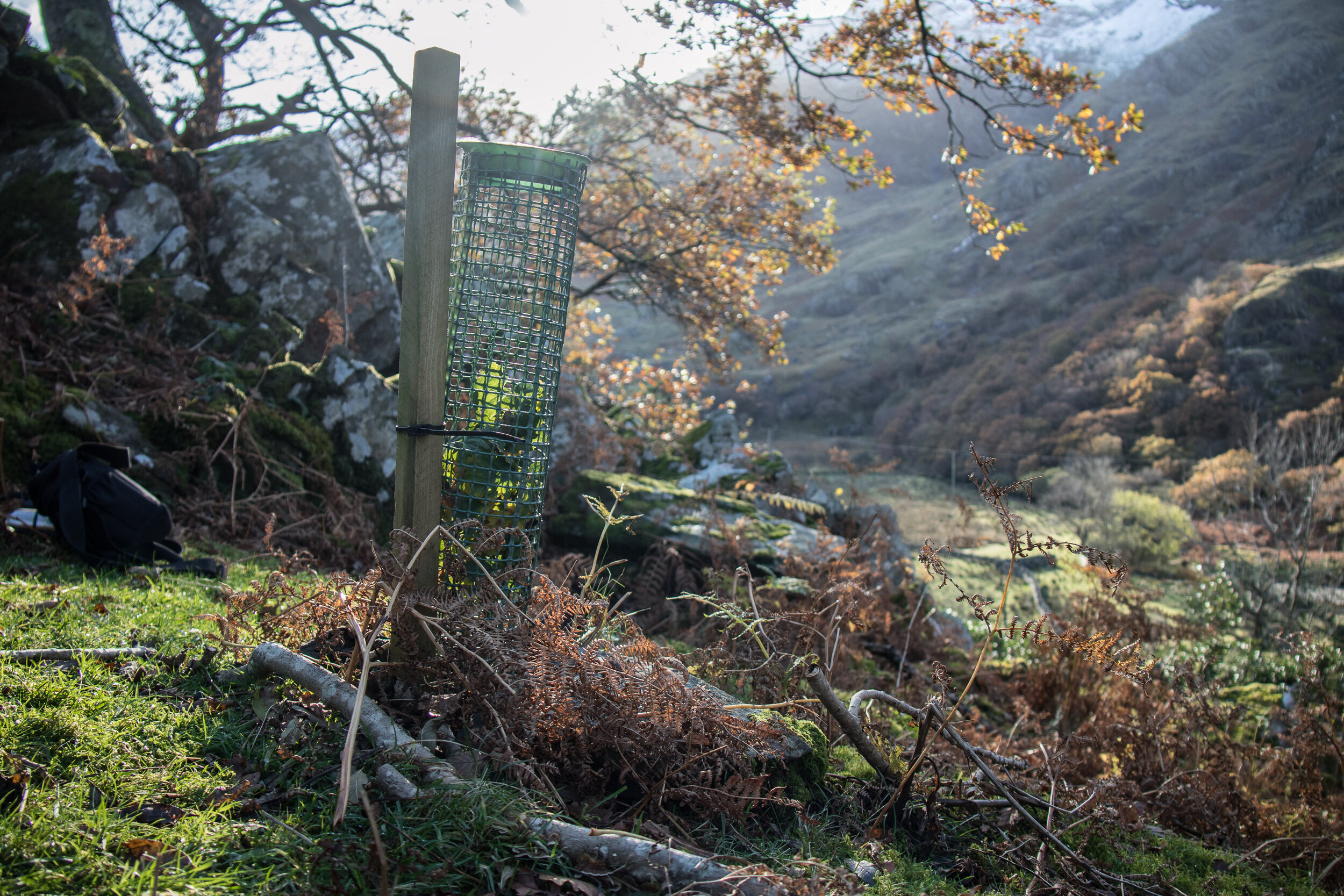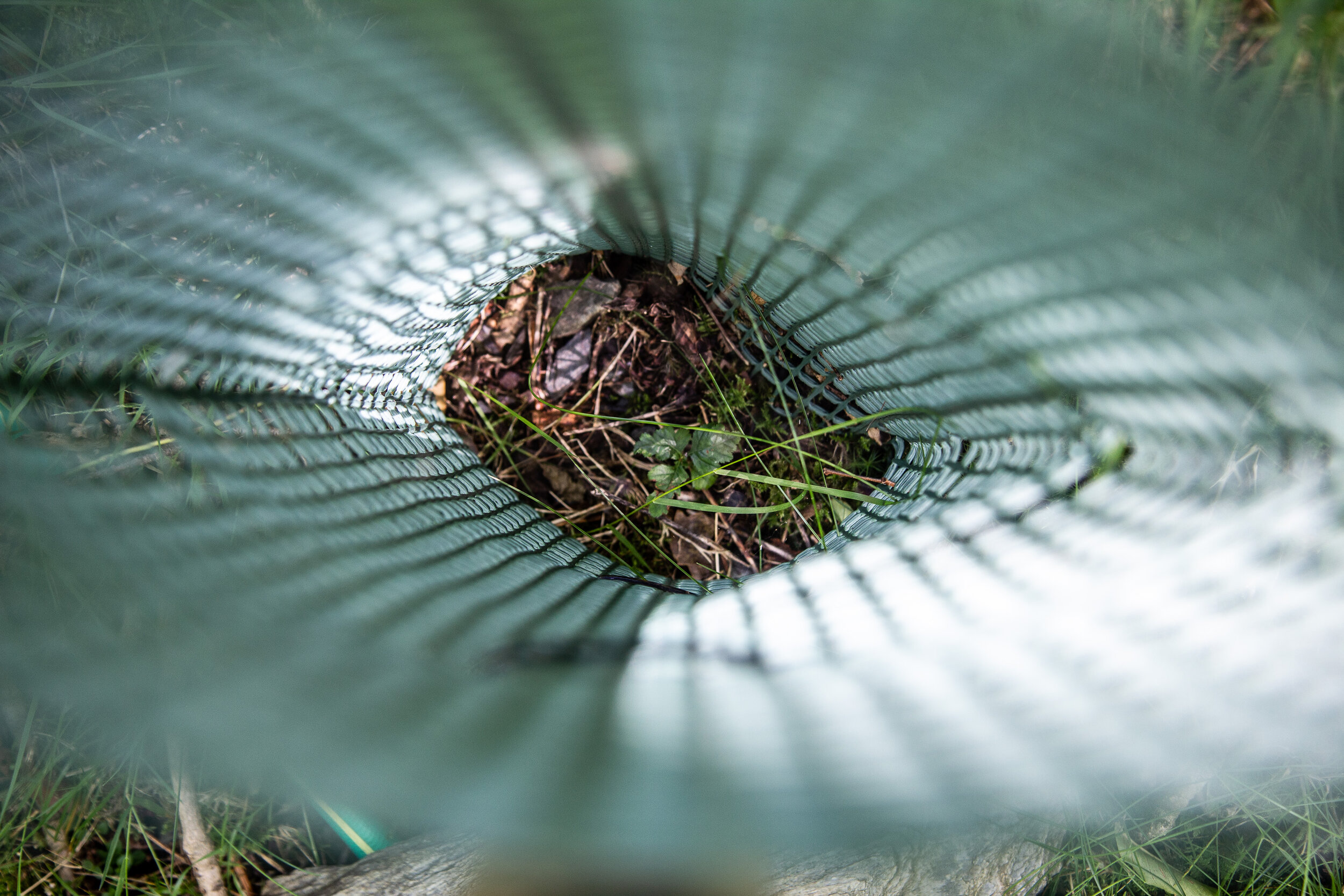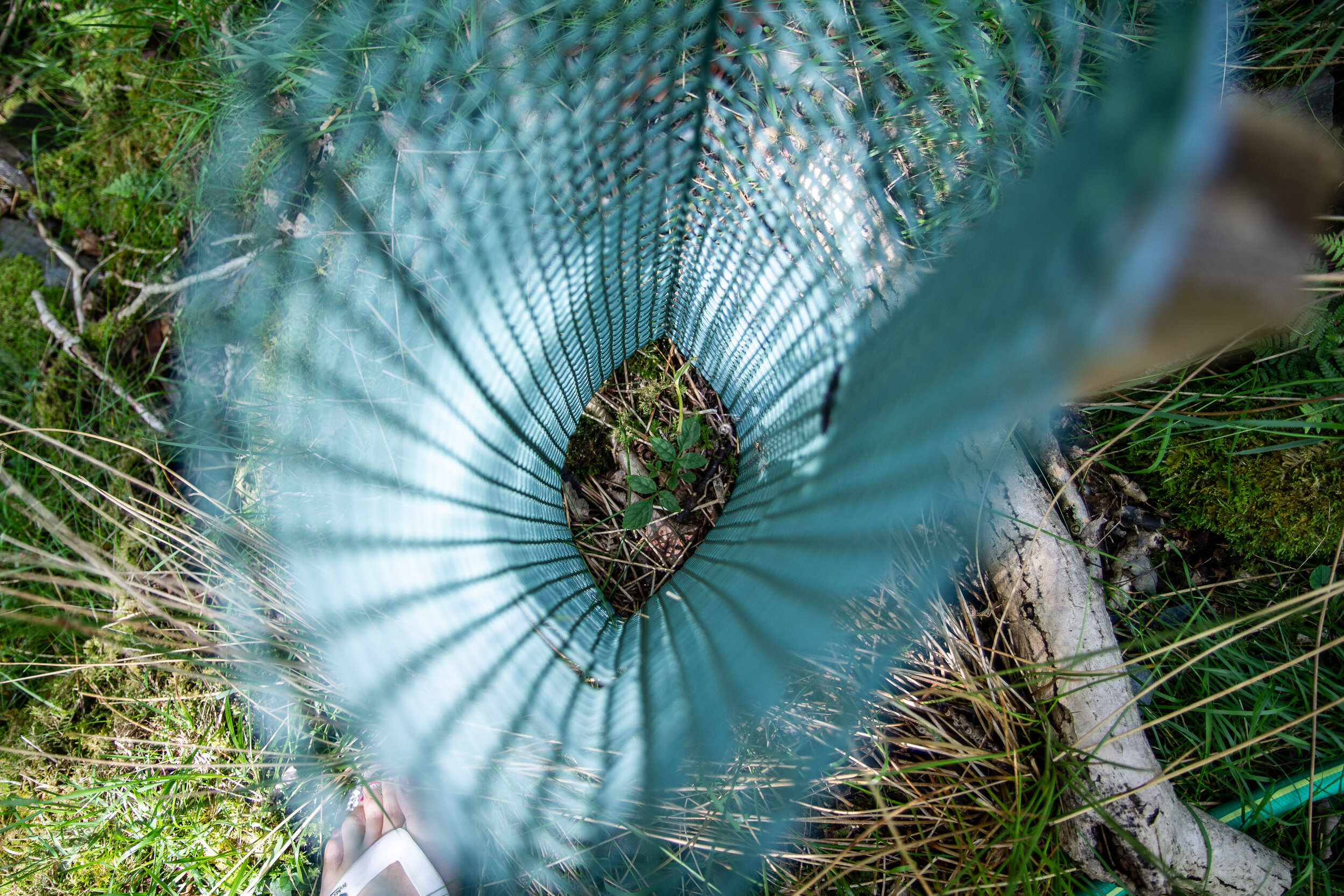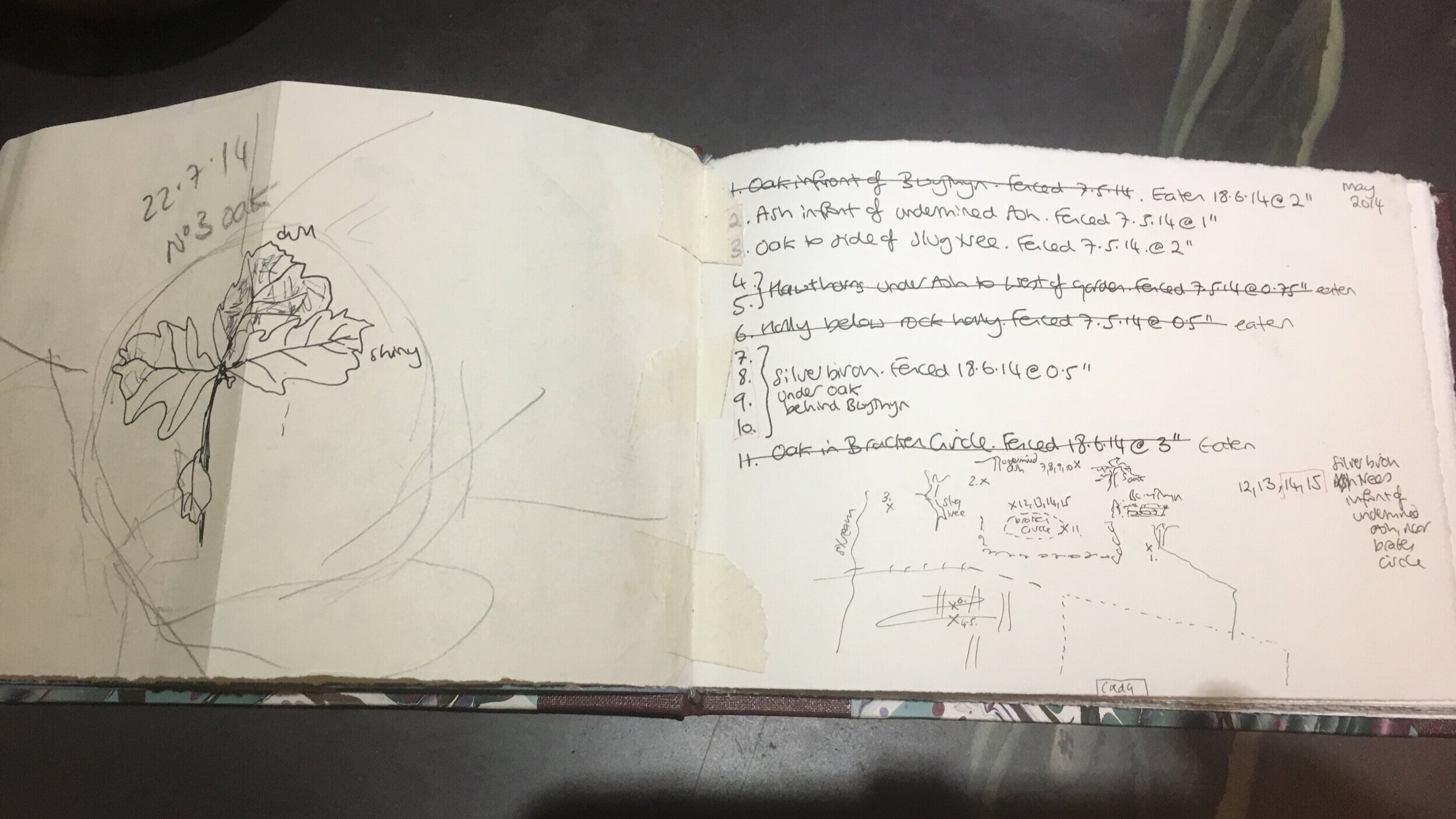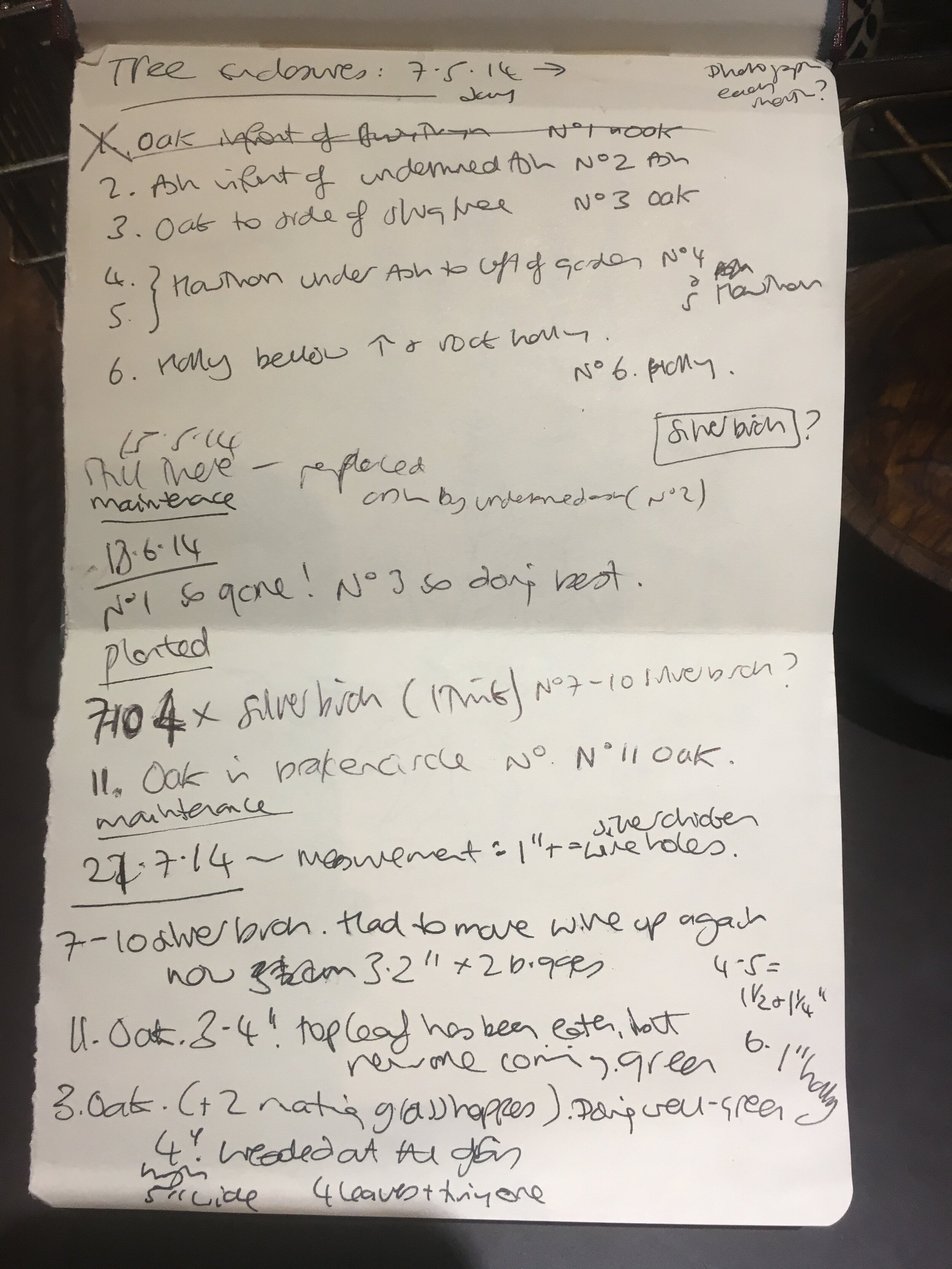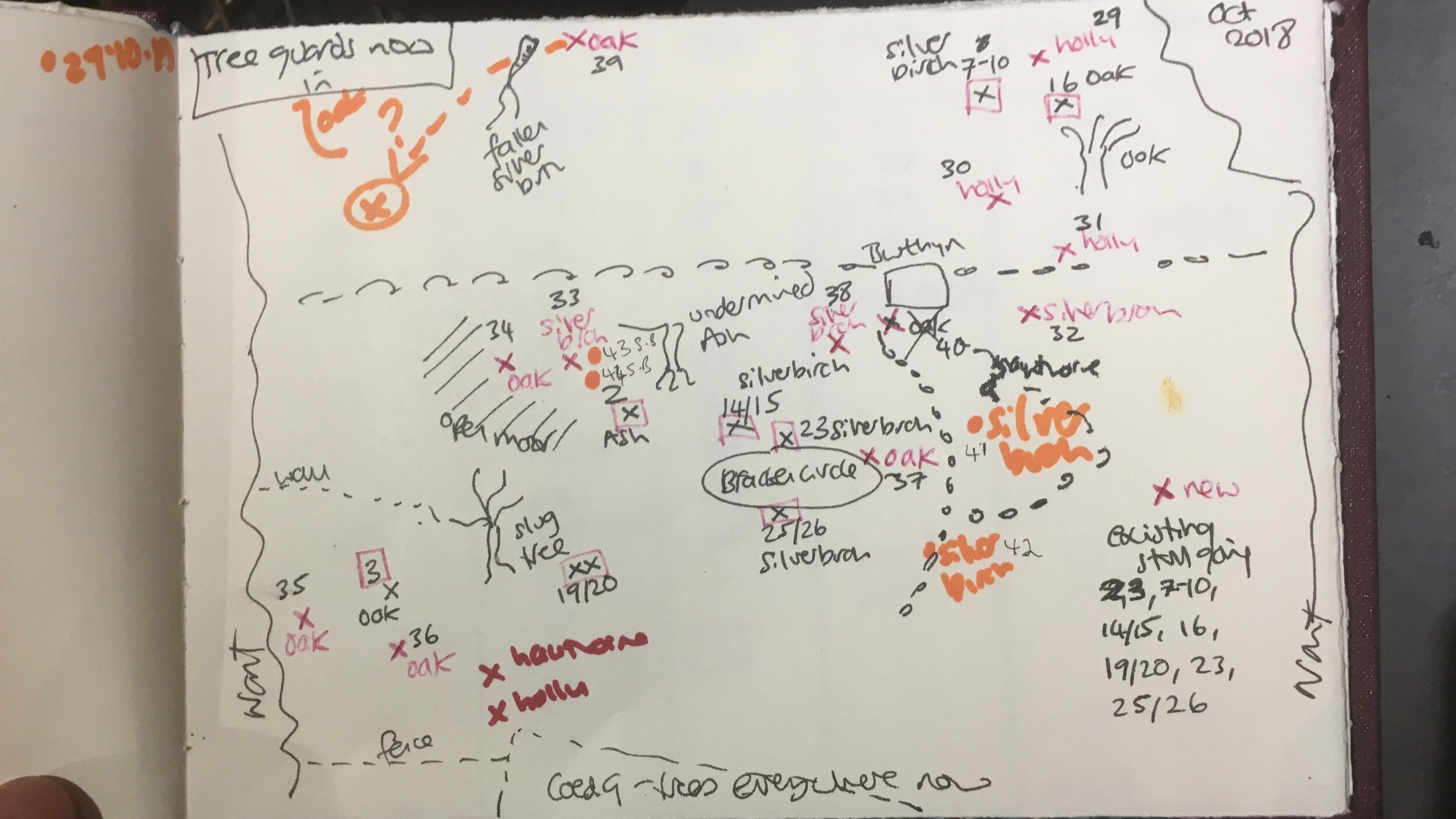Tree enclosures
While wandering around the foothills behind my house, I often notice tiny trees growing - often just one or two leaves on a teeny step, usually about 1cm high. They quickly disappear when the sheep spot them. Dei Tomos had pointed out to me that there were hardly any young trees at all in the area, and we were in danger of losing all our trees within a lifetime, as they die off.
So in May 2014, when I met John Morgan, the farmer who works the land, I asked him if I could try protecting the tiny trees i find. He said I was welcome to, but didn’t think that trees would grow here. I thought I’d like to find out.
My makeshift enclosures, which started off with bits of chicken wire/old bits of fencing, have become more ‘formal’ as times goes on because as soon as they get displaced, or poke out the top or the sides of the enclosure, the little trees get eaten by the sheep and goats. So in a way, John is right. But the little trees do seem to want to grow. Here’s one of my longest attended trees, Oak # 3 (photos on 7th May 2014 and 10th November 2019) is now (July 2020) 39cm tall. You can see they grow quite slowly….
So I’ve been making and mapping these enclosures for six years. I now (19.7.20) have 97 enclosed: ash (18), oak (18), birch (43), holly (8), hazel (2), hawthorn (7), rowan (1). Ashes used to be the most numerous, but there are hardly any now (I’ve lost about 20). Hawthorns are also getting rare. I think both are especially tasty, because they are always tiny when I find them…
The enclosures follow the routes I wander up the back, and concentating around areas I spend most time, like around Bedwen Nain. Perhaps in 100, 200 years, these will be the only trees, as the others die and little other regeneration, my paths becoming forest…
Some of the silver birches have now reached the top of the longest protectors… and immediately get bitten off…
So I’ve got some longer enclosures, and now the tallest tree is a birch. Here she is with her original enclosure at just 5cm (18.6.14), and now at 1.2m…
And meanwhile the old Ashes are dying back:
Obviously progress is slow. People keep urging me to plant the trees. But I am both hopeless at growing things and concerned about the ‘plant trees everywhere’ zeitgeist. I am happy attending to what is there, finding out where trees would want to grow themselves. I think this is how we’ll nurture land back to health, by working with it, by using intimate knowledge of place. I’m mapping them as I go.
prize winning peas and marrows - the benefits of anticipatory history
Yn ôl bob son, there’s not much hope of growing food here, what with the lack of light, driving wind and rain, army of slugs and snails, acid soils and steep rocky slopes. And my complete lack of experience (attempts at growing globe carrots as a child aside). But in researching the history of my house, I learned that in 1898 one of my ‘house geneology relatives’, quarryman/chair of the Nant Peris literary society Griffith Jones, won third prize for his ‘twenty pods of peas’ and ‘two marrows’. As Desilvey, Naylor and Sackett say in ‘Anticipatory History’, ‘the stories we tell about ecological and landscape istories shape our perception of what we might call future plausabilities’. So. Perhaps I could try to grow marrows and peas?
So I dug a pond to get the soil. Ferretted around to dig compost from piles of stuff accumulated in the garden. Found some abandoned planks up the mountain from the hydro scheme and made a little raised bed. Others were doing the same, and we exchanged seeds and plants (it was really hard to get hold of them in lockdown - as someone said, seed-dealers were the new drug-dealers), and shared tips on how and what to grow.
And the results? The best growers have been… peas (from little plants donated by Chris and Linda up the road) and corgettes (from a little plant donated by Alex in Rhiwlas)!
It’s a tiny contribution. But I was just reading in Jonathon Porritt’s new book, “Hope in Hell” that in the war, 40% of all food was grown in people’s gardens… we’ve so lost touch haven’t we, with the soil. With growing. All those gardens valuing look over productivity….


